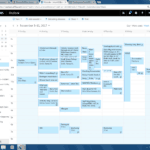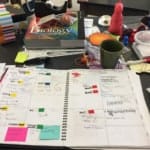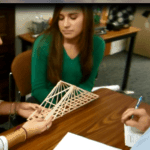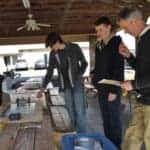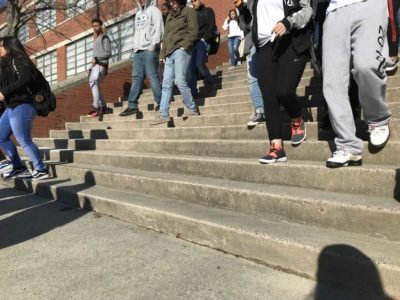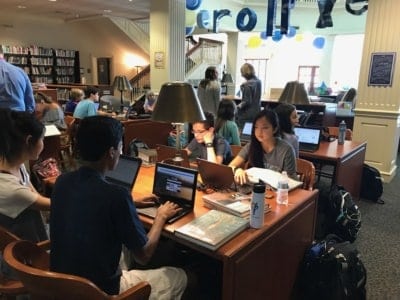Over my last 20 years in education, one thing has remained consistent: I never seem to have enough time.
I hear this feedback from my colleagues in surveys and focus groups, as we share our professional development plans, and read about it in educational blog. Teachers need more time to plan and prepare for their classes. When you add the need for continuing education to serve our students in an ever changing environment, the administrative duties that lay outside of teaching, the creation of content for our classrooms because we are not teaching from a textbook, and our desire to support families with a growing population of students, there aren’t enough hours in the day, and certainly not in the average 45 minute planning period per day that most elementary and secondary teachers are given.
A teacher’s planner: color-coded moveable tags, inspirational notes, evidence of an effort to maintain a work/life balance. Teachers struggle to fit it all on the page.
Project-based learning is only one of many highly effective teaching strategies to improve student learning. Like many other new developments in education, it’s not included in the curriculum of our current education certification programs and veteran teachers need the time and space for professional development to bring these innovative projects to life in their classrooms. What if we put this PBL model in place for our teachers and they could experience the same opportunity for growth in their continued learning to support our students?
Read more about the fantastic PBL lessons seen above by visiting Ben’s blog.
There is very little data to the effectiveness of all the tasks that educators conquer in addition to their job of teaching. Sponsoring clubs, managing social media, communicating with community partners, planning field trips and actually shopping for supplies. Teachers do it all.
For many teachers and schools, time and money spent at the copiers continues to take a toll on an already tight budget. This reality impacts everyone from arts educators who are creating their own curriculum, materials and ancillary items, to core subject teachers dealing with outdated textbooks in the classroom. The time and cost of these copies is multiplied when added to limited number of machines available at each school that are rarely in working order. As the Standard Course of Study continues to change across many subjects this becomes even more problematic.
To be honest, the most time consuming part of my job as a teacher and the part I value most is making parent contacts. Building relationships to support our students and our families is one of the most important things we do. Depending on class sizes and demographics, the need for family contacts to reach struggling students can vary from one or two a week to thirty or forty a week.
The truth is, an important part of our job is reaching out to all of our students’ families. To put this time in perspective, most secondary teachers have more students than there are days in a school year. Managing parent contacts effectively with little planning time can be a challenge.
“The minutes and hours of the school day are critical to build knowledge, foster student motivation, and drive student outcomes.”
What could we accomplish if we were allowed to use our time as it was intended: 80 minutes of uncompromised planning and collaboration, duty-free lunch and planning, and built in time for conferencing. It is time to rethink what our school day looks like.





